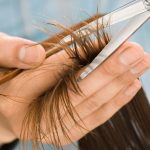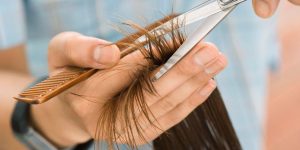It’s essential to note that these products have been a popular option for individuals with curly or textured hair looking to achieve a straighter look. However, with growing concerns about the potential risks and side effects connected with these chemical treatments, many people are reconsidering their use.
In what way do they work?
Here we speak about chemical treatments that are applied to curly or textured hair. These products will make it easier to manage the hair, reduce frizz, and make it look shinier.
Relaxers work by chemically breaking down the protein bonds in the hair, which are responsible for its curly or textured structure. They are typically applied using a brush or applicator and left on the hair for a certain amount of time, in dependence of the desired level of straightening.

The effect of hair relaxers can last from several weeks to several months, depending on the individual’s hair growth rate and the frequency of reapplication. Generally, results are not permanent and require touch-ups as the new hair growth at the roots will be unprocessed and, thus, not straightened. Some people may opt for touch-ups every six to eight weeks, while others may wait longer.
What are the main types of hair relaxers?
You can find two main types: lye and no-lye formulas. The first one is made with sodium hydroxide and is known for its strength and ability to straighten hair effectively.
In contrast, no-lye relaxers usually contain potassium, lithium, or guanidine hydroxide and are milder than lye relaxers. Furthermore, they are often recommended for those, who have sensitive scalps or who have previously experienced scalp irritation from lye relaxers.
The potential risks of using hair relaxers
While hair relaxers can offer a range of benefits, it is important to acknowledge the potential risks associated with their use.

One of the most significant risks is the potential for scalp irritation. The chemical ingredients in hair relaxers can cause burning, itching, and even chemical burns if left on the scalp for too long or not used properly.
In addition to scalp and skin irritation risk, hair relaxers can also cause hair breakage and damage. The chemicals in the relaxer can weaken the hair shaft, making it more prone to breakage and damage from heat-styling tools, such as flat irons and blow dryers. That is why it is important to use a hair relaxer only as directed and avoid overuse.
Are there any natural hair relaxers?
Some natural ingredients have a slight relaxing effect on hair but are not as effective as chemical hair relaxers. For example, coconut milk and oil help loosen curls and even straighten the hair. Other natural ingredients that have relaxing properties include honey, yogurt, and aloe vera.
However, it’s important to note that the effects of natural hair relaxers are not as long-lasting or dramatic as those of chemical relaxers. Additionally, using natural ingredients to relax hair requires more frequent applications and may take longer to achieve the desired results. It’s also worth mentioning that natural ingredients can still have risks and side effects, so it’s important to research and understand their properties before using them on your hair.





